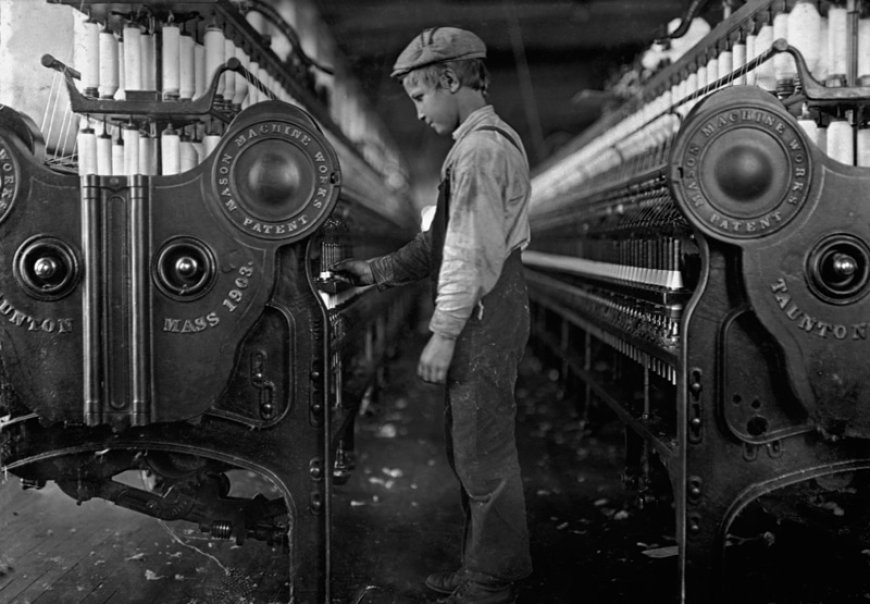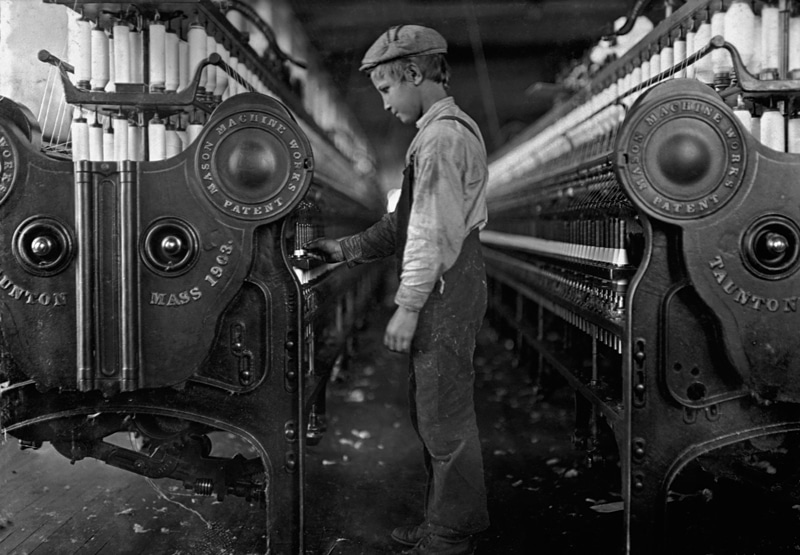Attacks on U.S. child labor laws increase as violations skyrocket | SMART Union
Attacks on U.S. child labor laws increase as violations skyrocket Smart Union

Child Labor and the Threat to American Progress

Child labor has been a dark chapter in the history of the United States. During the industrial revolution, employers exploited children for profit, subjecting them to dangerous working conditions and long hours. However, the labor movement fought against these practices and achieved significant progress in protecting children’s rights. The Fair Labor Standards Act of 1938 marked a turning point by prohibiting the employment of minors in most industries and implementing regulations in others.
Unfortunately, recent developments threaten to undermine this progress. Unscrupulous employers and state governments are attempting to weaken child labor protections, endangering the well-being of young workers. It is crucial for union members to stand firm in defense of our hard-won achievements. Pro-labor elected officials are taking action to address this issue. Senators Bob Casey and Patty Murray introduced the Children Harmed in Life-Threatening or Dangerous Labor (CHILD Labor) Act, which aims to strengthen penalties for employers found guilty of violating child labor laws.
Assaults on American Progress
Republican governors and GOP-controlled legislatures in various states are pushing for laws that roll back protections against child labor. Arkansas Governor Sarah Huckabee Sanders, for example, signed legislation eliminating the state’s work permit requirement for 14- and 15-year-old employees, despite a federal labor investigation that uncovered illegal child labor in a hazardous meatpacking company. Similarly, Iowa Governor Kim Reynolds signed a bill allowing younger teenagers to work longer hours, including hazardous jobs.
Advocates of these laws argue that they address labor shortages. However, union members recognize the true motive behind these measures: corporations and their political allies would rather exploit children than provide fair wages and benefits to workers. These legislative efforts coincide with a concerning rise in child labor law violations. The US Department of Labor reported a significant increase in cases of child labor violations, with instances of children as young as 10 illegally employed in various industries.
The Exploitation of Vulnerable Workers
Child labor violations often target vulnerable populations, particularly migrant children who may be unaware of their rights or feel they have no other options. Tens of thousands of migrant children, including teenagers, are employed across the United States, working in industries such as construction and roofing. This exploitation mirrors the wage theft and worker misclassification issues prevalent in the construction industry.
SMART General President Michael Coleman emphasized the importance of standing up against these injustices. The labor movement will continue to advocate for stronger workplace protections, combat child labor violations wherever they occur, and collaborate with pro-labor allies in government to strengthen laws safeguarding our families.
SDGs, Targets, and Indicators
-
SDG 8: Decent Work and Economic Growth
- Target 8.7: Take immediate and effective measures to eradicate forced labor, end modern slavery and human trafficking, and secure the prohibition and elimination of the worst forms of child labor.
- Indicator 8.7.1: Proportion and number of children aged 5-17 years engaged in child labor, by sex and age group.
- Indicator 8.7.2: Number of victims of human trafficking per 100,000 population, by sex, age group, and form of exploitation.
-
SDG 4: Quality Education
- Target 4.1: By 2030, ensure that all girls and boys complete free, equitable, and quality primary and secondary education leading to relevant and effective learning outcomes.
- Indicator 4.1.1: Proportion of children and young people (a) in grades 2/3; (b) at the end of primary; and (c) at the end of lower secondary achieving at least a minimum proficiency level in (i) reading and (ii) mathematics, by sex.
Table: SDGs, Targets, and Indicators
| SDGs | Targets | Indicators |
|---|---|---|
| SDG 8: Decent Work and Economic Growth | Target 8.7: Take immediate and effective measures to eradicate forced labor, end modern slavery and human trafficking, and secure the prohibition and elimination of the worst forms of child labor. |
|
| SDG 4: Quality Education | Target 4.1: By 2030, ensure that all girls and boys complete free, equitable, and quality primary and secondary education leading to relevant and effective learning outcomes. |
|
Analysis
1. Which SDGs are addressed or connected to the issues highlighted in the article?
The issues highlighted in the article are connected to SDG 8: Decent Work and Economic Growth and SDG 4: Quality Education.
2. What specific targets under those SDGs can be identified based on the article’s content?
Based on the article’s content, the specific targets identified are:
– Target 8.7: Take immediate and effective measures to eradicate forced labor, end modern slavery and human trafficking, and secure the prohibition and elimination of the worst forms of child labor.
– Target 4.1: By 2030, ensure that all girls and boys complete free, equitable, and quality primary and secondary education leading to relevant and effective learning outcomes.
3. Are there any indicators mentioned or implied in the article that can be used to measure progress towards the identified targets?
Yes, there are indicators mentioned in the article that can be used to measure progress towards the identified targets:
– Indicator 8.7.1: Proportion and number of children aged 5-17 years engaged in child labor, by sex and age group.
– Indicator 8.7.2: Number of victims of human trafficking per 100,000 population, by sex, age group, and form of exploitation.
– Indicator 4.1.1: Proportion of children and young people (a) in grades 2/3; (b) at the end of primary; and (c) at the end of lower secondary achieving at least a minimum proficiency level in (i) reading and (ii) mathematics, by sex.
These indicators can be used to measure progress in eradicating child labor, ensuring quality education, and addressing human trafficking.
4. Table: SDGs, Targets, and Indicators
| SDGs | Targets | Indicators |
|---|---|---|
| SDG 8: Decent Work and Economic Growth | Target 8.7: Take immediate and effective measures to eradicate forced labor, end modern slavery and human trafficking, and secure the prohibition and elimination of the worst forms of child labor. |
|
| SDG 4: Quality Education | Target 4.1: By 2030, ensure that all girls and boys complete free, equitable, and quality primary and secondary education leading to relevant and effective learning outcomes. |
|
Behold! This splendid article springs forth from the wellspring of knowledge, shaped by a wondrous proprietary AI technology that delved into a vast ocean of data, illuminating the path towards the Sustainable Development Goals. Remember that all rights are reserved by SDG Investors LLC, empowering us to champion progress together.
Source: smart-union.org

Join us, as fellow seekers of change, on a transformative journey at https://sdgtalks.ai/welcome, where you can become a member and actively contribute to shaping a brighter future.







